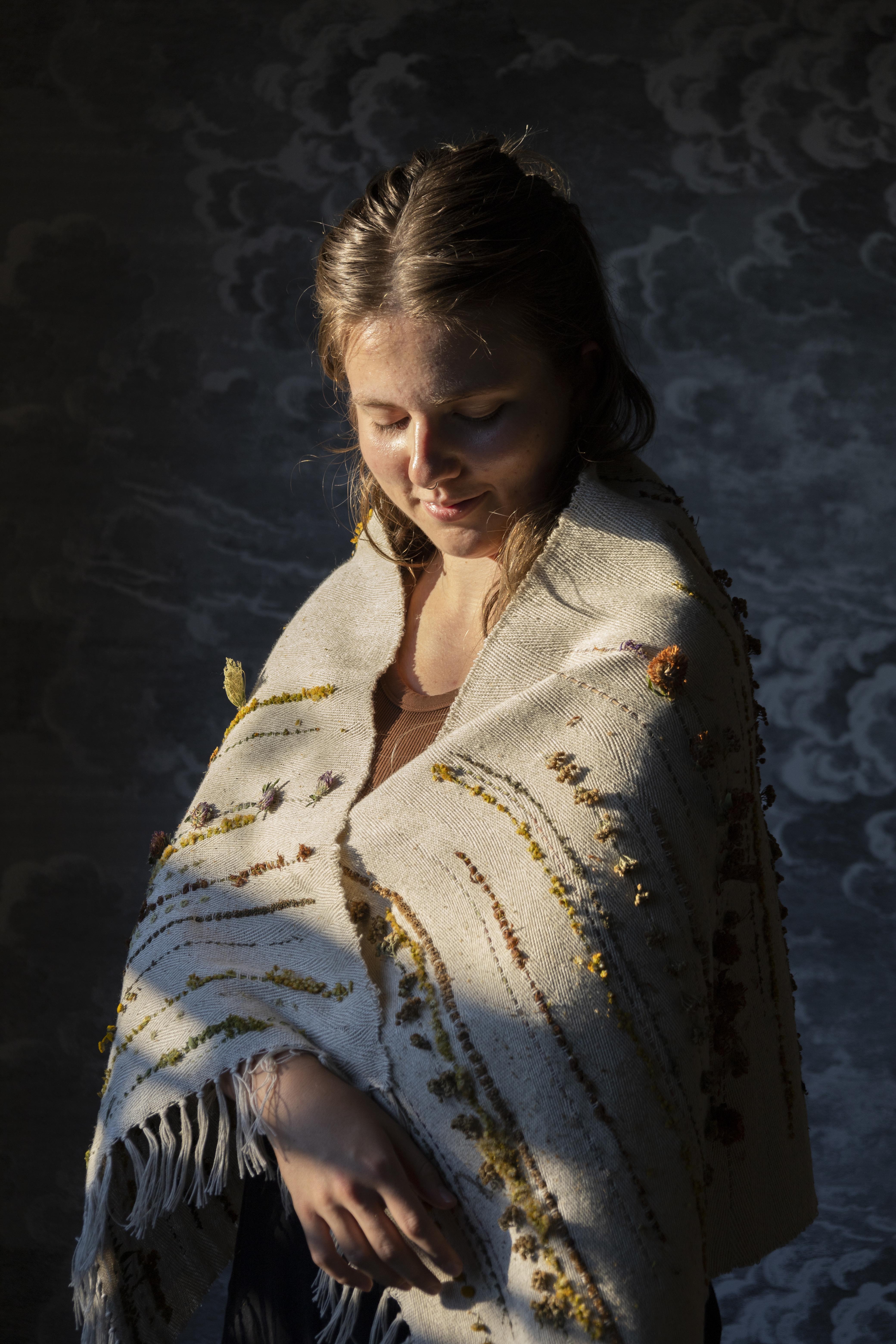Danika Oystrek Weaves a More Sustainable Future with Wearable Artwork

Artist and designer Danika Oystrek models their wearable artwork, what is more than is known. (Photo by Yutaan Lin / Courtesy Danika Oystrek)
Posted on | Updated
The artist, designer and recent ECU grad invokes the history of False Creek Flats to build a vision of its tomorrow.
A wearable artwork by artist and designer Danika Oystrek (BDes 2022) imagines a future where clothing becomes a vehicle for environmental renewal.
Titled what is more than is known, the artwork was produced as a project for the Satellite x False Creek residency. The Satellite Residency program is run by the Shumka Centre for Creative Entrepreneurship at Emily Carr University. The two-month residency supports artists and designers with funding, studio space and mentorship toward completion of a specific project.
The latest edition of the Satellite series included projects exploring the False Creek area through a variety of lenses.
For their project, Danika focused on the plants that grow wild around the area known as the False Creek Flats. This area is home to numerous businesses and dwellings, including the ECU campus.
“what is more than is known is a woven shawl embedded with seeds of plants foraged from the False Creek Flats,” Danika, who uses the pronouns she/they, writes. “The shawl is an exploration of wearables that act reciprocally with nature; humans become an agent of seed dispersal for medicinal, or dye- and fibre-producing plants. This shawl is emblematic of a future wherein humans gain agency over their consumption in urban settings through knowledge of local plants and their uses.”
In imagining a more sustainable future, Danika notes their project also points to the past. Locating the project in the False Creek Flats calls attention to the area’s colonial history.
“Historically, this 450-acre piece of land was a mudflat ecosystem and was known to the Sḵwx̱wú7mesh Úxwumixw as Skwácháy̓s, meaning ‘water spring, or water coming up from the ground beneath,’” she writes.

what is more than is known is a woven shawl embedded with seeds of plants foraged from the False Creek Flats. It is emblematic of a future where humans gain agency over their consumption through knowledge of local plants and their uses. (Photo by Yutaan Lin / Courtesy Danika Oystrek)
In 1916, The Canadian Northern Railway began filling in the mudflat for development. In the century since, a “vibrant ecosystem” was transformed into a “hub for industry,” Danika continues.
But wild growth still persists. And even though many such plants are indigenous to the area, they’re often seen as invaders in an urban landscape. They’re “weeds” that interfere with human work. Danika suggests that in changing our view of these hardy perennials, we rethink our relationship to the natural world.
“what is more than is known is a slow and persistent intervention against the continuous degradation of our ecosystems by industry,” she writes. “It begins to shift the dominant narrative in the False Creek Flats from an anthropocentric, economic point of view to a holistic and ecocentric understanding.”
Visit Danika’s website and follow her on Instagram to learn more about their work.
Learn more about the Shumka Centre’s extraordinary range of programming and resources via their website.
--
Visit ECU online to find out more about the Bachelor of Design degree at Emily Carr University.